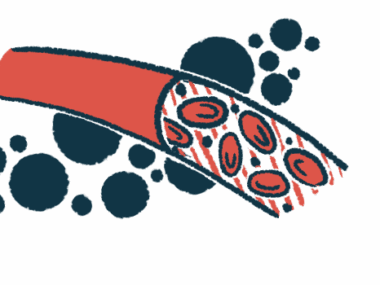Knowing my ankylosing spondylitis triggers helps me ease my symptoms
How I've benefited from figuring out what causes my AS to flare
Written by |

I’m excited to share an update on my ankylosing spondylitis (AS) journey, because I’m experiencing minimal pain and stiffness at the moment. I’ve slept peacefully through the night for the last week, without tossing and turning in discomfort, and I’m not constantly thinking about pain and how to avoid it.
Cue the fireworks! Clink the champagne glasses! I feel like I should be celebrating.
For example, normally I dread having to vacuum and mop our big, family-sized house. It takes an entire afternoon to complete, and all that repetitive twisting and pushing leaves my lower back and shoulder blades hurting abominably. It’s a chore that I put off for days (or weeks, but shhh, don’t tell anyone).
But today, my two kids, ages 5 and 7, had a few buddies at our house for a rambunctious day of playing. After their departure, I crawled around picking up roughly a million Lego pieces, and then vacuumed up the drifts of crumbs and sand tracked throughout the house. Standing up afterward, I stretched my arms to the ceiling and was delighted to note that I hadn’t experienced a single twinge.
Feeling physically capable again is pretty exciting. I put this current improvement down to understanding some of my AS triggers better — or in other words, figuring out what makes my symptoms flare. I thought I’d share how I navigate these triggers in case it helps anyone else.
Diet is one of my major AS triggers
If I could only manage my AS one way, I’d choose diet modifications over everything else. I follow the no-starch diet for ankylosing spondylitis, because starch is understood to feed specific bad bacteria in the gut that increase joint inflammation in people with AS. Without starch, those troublesome bacteria are reduced, and my joint pain improves dramatically.
Because I consider starch a trigger food, I eat mostly meat, fish, and green vegetables, with lots of olive oil and the occasional piece of dark chocolate.
If I eat a single nibble of starch, within hours I can feel my back stiffening and my sacroiliac (SI) joints radiating pain. It’s pretty amazing what a difference diet makes for me.
Hormones seem to affect my inflammation
As a woman with fluctuating hormone levels, I’ve realized that I often feel worse at that specific time every month before my period. I’m not sure why hormone changes trigger my AS, but now that I know to expect this, I don’t worry myself every month when my symptoms feel worse. I just have to wait it out and keep anti-inflammatory medication handy.
Poor sleep creates a vicious cycle
It’s incredibly hard to have restful sleep when you have AS pain and inflammation. In fact, the term “painsomnia” was coined to describe insomnia caused by chronic pain. If I have several nights of rubbish sleep in a row, I don’t cope well with pain. I get more stressed, my pain gets worse, and then I sleep badly again. It’s a vicious cycle.
After seeing a doctor, I’ve started taking a medication called amitriptyline, which was prescribed for a number of medical reasons. However, it’s been incredibly helpful in improving my sleep. I’m waking up more rested, my body feels rejuvenated, and I have more energy to take care of my health. Of course, always check with your doctor before changing your medication regimen.
A hot spa or long shower in the evening also improves my sleep. I’m less stiff, my muscles aren’t as tight, and I don’t wake up feeling like I flipped around fitfully all night.
There are plenty of different ways to improve sleep, and I think it’s worth speaking to a doctor about.
Exercise can be positive and negative for me
Movement is important for people with ankylosing spondylitis to stop joints from stiffening. From experience, I’ve discovered that some forms of exercise trigger increased pain in my body. I’ve had to carefully track and test different movements and exercises.
For example, full-body exercises with weights, such as dead lifts, leave me feeling almost crippled the next day. Even some yoga moves cause pain in my shoulders, ribs, and SI joints. Luckily, I’ve discovered that swimming, walking, and simple body-weight exercises get my muscles and joints moving without adding any pain.
When it comes to ankylosing spondylitis triggers, we’re all very different, so I think it’s important to test and record your own steps. I’ve spoken to my doctors, rheumatologists, and exercise physiologists about all of my triggers to create a personalized plan.
I don’t expect this wonderful time of relief to last forever, as my AS seems to cycle between stability and flares, but I’m definitely enjoying it while I can.
Note: Ankylosing Spondylitis News is strictly a news and information website about the disease. It does not provide medical advice, diagnosis, or treatment. This content is not intended to be a substitute for professional medical advice, diagnosis, or treatment. Always seek the advice of your physician or other qualified health provider with any questions you may have regarding a medical condition. Never disregard professional medical advice or delay in seeking it because of something you have read on this website. The opinions expressed in this column are not those of Ankylosing Spondylitis News or its parent company, Bionews, and are intended to spark discussion about issues pertaining to ankylosing spondylitis.







Leave a comment
Fill in the required fields to post. Your email address will not be published.